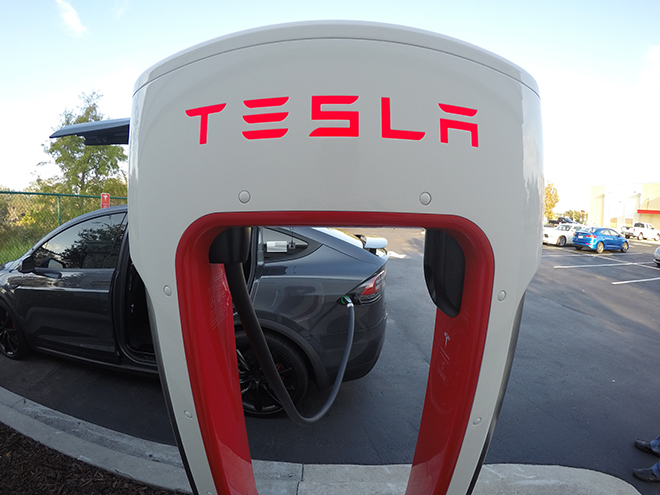California’s Office of Administrative Law has approved amendments to its Electric Vehicle Fueling Systems Specifications that will eventually ban public charging operators from billing by the minute in the state.
The ban will apply to new Level 2 chargers beginning in 2021, and to new DC fast chargers beginning in 2023. Chargers installed before 2021 can continue time-based billing until 2031 (for Level 2 chargers) or 2033 (for DC fast chargers).
This will require some restructuring in the charging market, as several major charging networks, including Electrify America and EVgo, currently bill by the minute, as do some ChargePoint site hosts (and the charger-sharing network EV Match, profiled in the latest issue of Charged).
Charging network operators objected to the change, arguing that they are selling a service, but California’s Division of Measurement Standards (DMS) rejected their argument: “The Department acknowledges this group of comments and disagrees with the interpretation of the primary commodity being traded. As defined in BPC § 13400(a)(4) and (p), electricity is considered a type of motor vehicle fuel. NIST Handbook 44 makes clear what the unit of measure of electricity as motor vehicle fuel dispensed from EVSE shall be measured by – either the kWh or the megajoule (MJ).”
Many EV drivers and industry observers consider time-based pricing to be inherently unfair, because many factors can affect charging speed. When you’re billed by the kWh, you know exactly what you’re paying for, as is the case with gasoline. When you pay by the minute, the final price for a charge can vary depending on your state of charge, your vehicle’s maximum charging speed, or even the ambient temperature. Many drivers have experienced sticker shock – in some cases, charging at a highway fast charger costs more per mile than fueling a legacy ICE vehicle. Electrek calculates that EVgo’s base per-minute rate translates to over three times the average cost of the electricity under ideal conditions.


The only practical argument we’ve heard in favor of charging by the minute is that, because charging rates tend to drop dramatically as state of charge nears 100%, it discourages charger hogs from overstaying their welcome at a charger when others are waiting. However, the new rule does not prohibit operators from charging an overtime fee (Tesla already does so at some busy stations). As Kevin Schnepp, Environmental Program Manager at the DMS, clarified in a message to Electrek, “Electric vehicle service providers are allowed to charge ancillary fees such as: a connection fee; waiting fee for staying connected after reaching full state of charge; parking fee where such charges are normally applied; and a non-network access fee where applicable, provided that these fees are disclosed to the consumer prior to initiating a charging session (there may be other allowed fees not identified in this example).”
There is another reason that networks charge by the minute: in some US states (20 at last count), only regulated utilities are allowed to sell electricity by the kWh. It remains to be seen whether more states will follow California’s lead – for the near future, network operators will have little choice but to use different pricing models in different markets.
Tesla has always billed by the kilowatt-hour in states where it’s allowed. However, there’s another amendment to the regulations that does affect Tesla. Charging stations will now be required to have a “primary indicating element on the face” of each station, which will display the price per kWh and a running total of the energy delivered – just like a gas pump. The new rule will apply to new DC fast chargers beginning in 2023, and all DC fast chargers will have to comply by 2033. Current Superchargers don’t have such a display, so Tesla will have some retrofitting to do. However, the meter does not have to be “directly integrated into the device,” so the company should be able to design some sort of add-on module, and avoid replacing the entire unit.
Editor’s note: This post has been revised to include the dates by which the new rules will take effect. An earlier version gave the erroneous impression that the ban on per-minute charging would take effect immediately.
Source: Electrek








































































